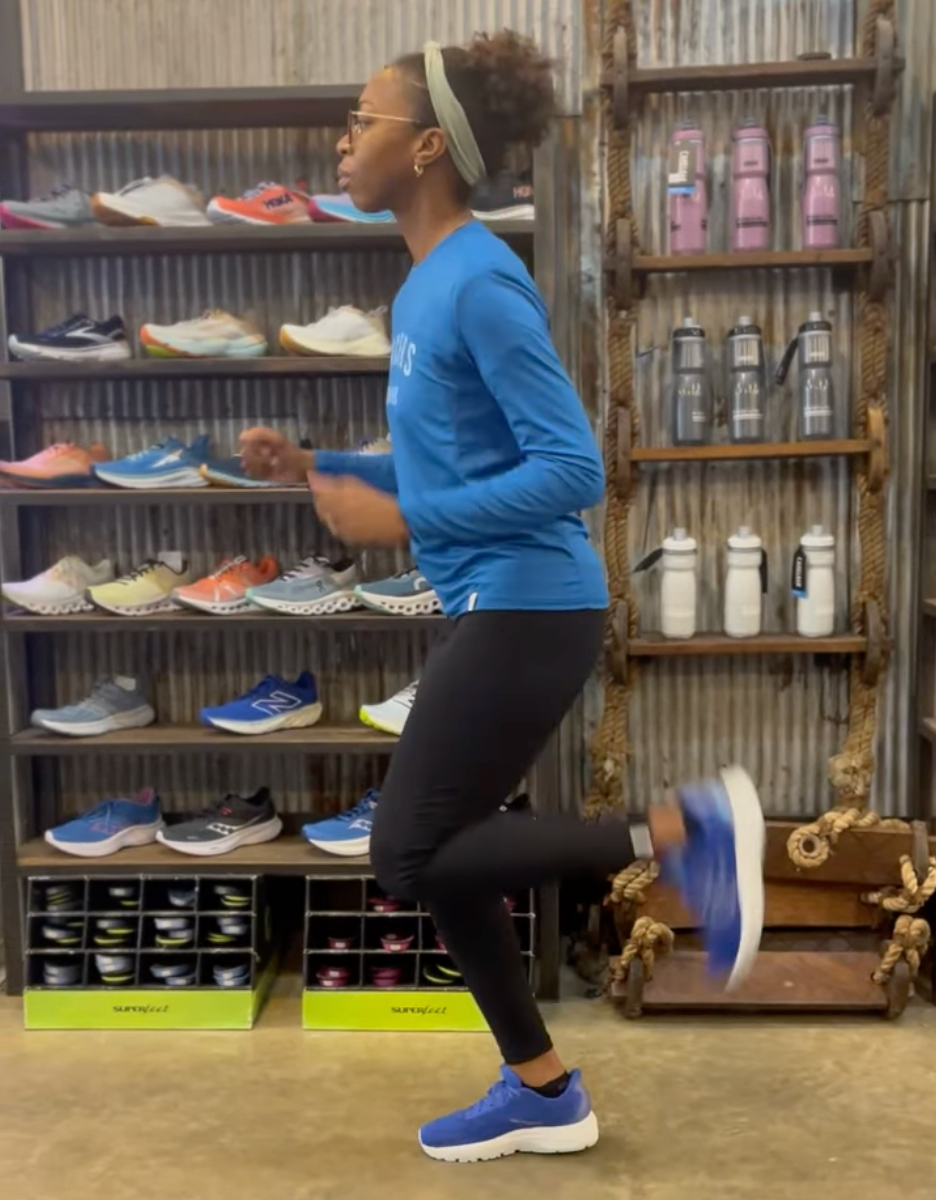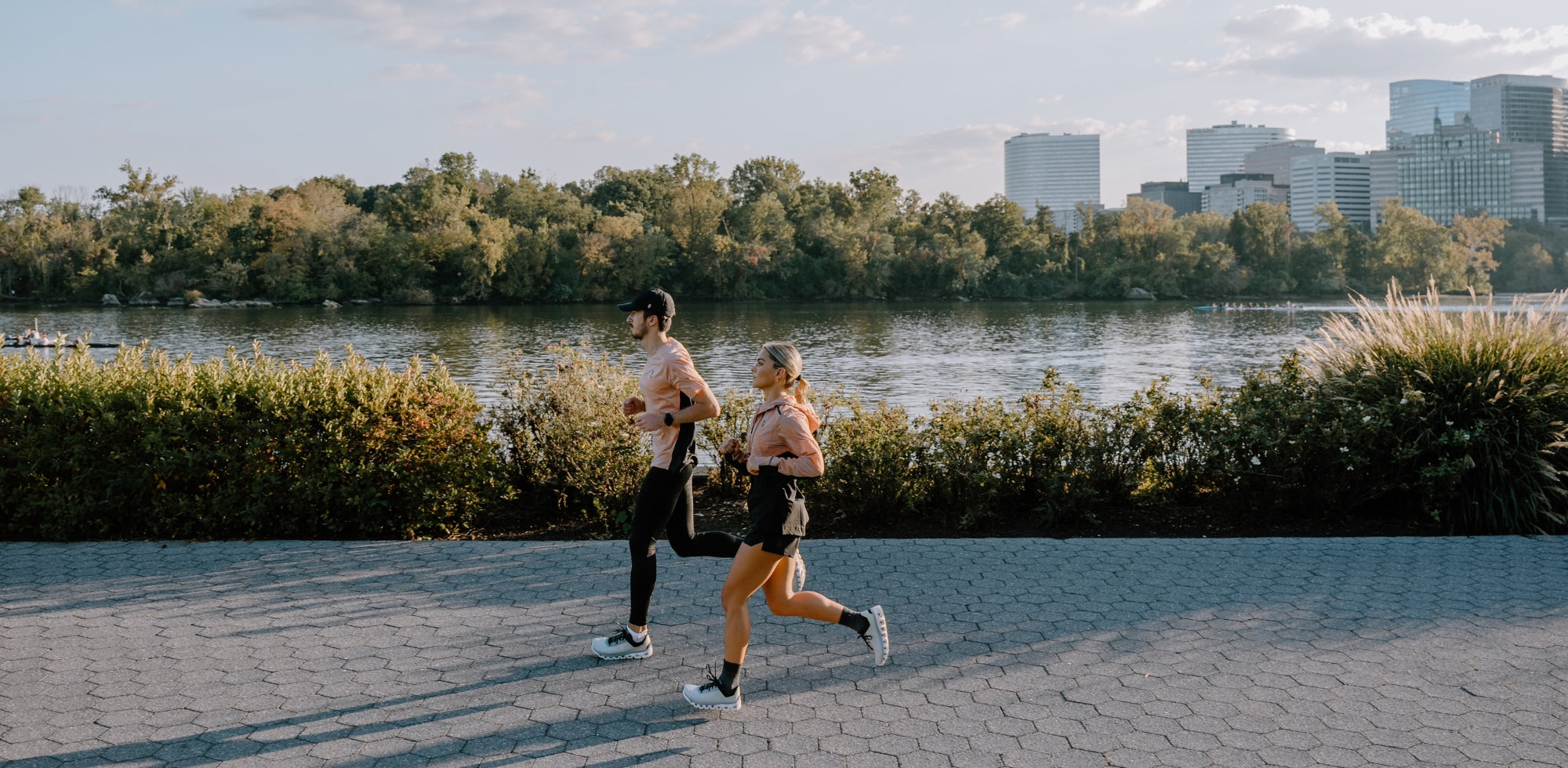One of the biggest appeals of running is that it’s one of the simplest activities out there to get started with. Just lace up a pair of shoes and go!
But, in reality, getting started can still be pretty daunting.
What do I do once I get out the door? How do I prevent injury and make sure the new routine sticks? What kind of shoes do I need? I see all these people running around my neighborhood decked out in fancy gear; do I need that too? Will I even like it?
If you’ve had any of these questions or doubts about starting running, you’re not alone! We’ve all started from the same place: Not running. And, even the most seasoned among us are still figuring it out as we go.
That said, if you’re just getting started running from scratch here are the things you need to know to stay comfortable, to prevent injuries, and most importantly, to make running a positive experience.
Set goals
We’re a purpose-driven species. Without a goal or end objective, we easily find ourselves rudderless and without motivation. To that end, if you don’t know what you want to get out of running, you’re unlikely to stick with it for long.
So, the first step to take that we'd recommend is to ask yourself what want from running.
Do you simply want to get in better shape without forking over a fortune to join a gym? Do you want to finish a 5K without walking? Do you want to beat that guy next door who’s always going on about his running accomplishments?
What you want from running should ultimately determine the process that you follow. And, speaking of the process, you’re going to need some process-oriented goals as well.
Having short-term goals will help you continue to get out there day after day when your larger goals can seem fuzzy or abstract, and will help prevent you from saying, “well, that’s a ways in the future. I might as well skip my run today.”
Simple things like wanting to sleep better at night, feeling invigorated by physical activity, or desperately needing to clear a podcast or audiobook queue are examples of short-term running goals that will keep you running in the long term.
Get proper running shoes
This probably isn’t breaking news to you, but the most important gear you need is a proper pair of running shoes. Some might tell you it’s the only thing you need (and, to an extent, they’d have a point!). Either way, you need good shoes.
Luckily, good running shoes are easy to find. All you have to do is pop into your local running store and a friendly runner will greet you and get you set with all you need to get going. They’ll ask you about your goals, measure your feet, look at your gait, and help you find the perfect running shoe for your needs.
We know it can be scary and intimidating to step in a running store for the first time, especially when you haven’t even started yet. Just know there’s nothing to fear! Everyone’s favorite customer is the new runner. We love to talk to new runners and get them set with the shoes, gear, and advice they need to find as much joy and fulfillment as we have through running. It’s what keeps us going.
Start small
You knew we were going to come to it: You have to walk before you can run. We mention the adage because it's as true and relevant in this case as in any other.
The most common mistake new runners make is to do too much too fast.
Running may seem simple, but it’s a high impact activity. Walking is great training for running. So, if you’re just starting running, don’t be afraid of walking. In fact, mixing in regular walk breaks into your runs can keep you injury-free as your body adjusts to the impact of running.
Many new runners ask what pace they should be going on runs. You want to be doing most of your runs at a “conversational pace.” In other words, you want to be able to hold a conversation while running without gasping for breath. In practical terms, start your run at what feels like an easy pace … and then slow down a bit from that.
Especially when you’re starting, it can help to focus on time rather than distance. For example, instead of heading out the door with the intent of running three miles, intend to run for 30 minutes. This allows you to better listen to your body and slow down if you need to. You might find yourself rushing through a run due to time constraints or a desire to get it over with if you’re focused on distance. A 30-minute run is going to last for 30-minutes regardless of how fast or slow you go. So, you might as well feel good.
Warm up properly
Stretching is an essential part of every runner’s routine. Stretching, of course, helps lower the risk of injury by increasing muscle flexibility and joint mobility. But, a dynamic pre-run stretching routine also increases blood flow and gets your body up to speed for the demands of running so your whole workout feels easier.
Static stretching after a run is also an important part of your cooldown. After running, your muscles will tighten up and are in need of relaxation. Gentle static stretches lengthen and relax these muscles, which promotes recovery and reduces soreness.
We've prepared videos containing instruction on warm-up and cool-down exercises here!
Get a sports bra
A supportive and properly-fitting running bra is a non-negotiable for runners with breasts. The ligaments that connect breast tissue to your chest stretch over time, so it’s important to support them. Breasts have little support on their own and the up-and-down movement during high impact activities like running can be uncomfortable. You can always stop by your local running store to get a proper fitting.
Avoid cotton
When you sweat – which you will do while running – cotton soaks up moisture, weighs you down, and can cause chafing. Wearing sweat-wicking athletic apparel will keep you comfortable and help with temperature maintenance on hot and cold runs alike.
Don’t forget about your socks! Just like any other cotton item, your socks will soak up sweat and cause blisters. An investment in a good pair of performance running socks is a good one. Your feet will thank you for avoiding blisters and letting them breathe free.



